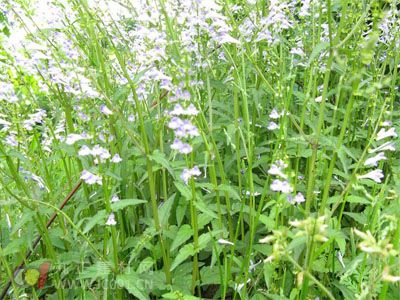Introduction to Scutellaria barbata Cultivation Technology:
Scutellaria barbata, commonly known as "Hedyotis," is a valuable medicinal herb that requires careful attention during cultivation. To ensure optimal growth, the first step is selecting the right land and preparing it properly. It is recommended to use loose, fertile sandy loam or loam soil, which should be plowed thoroughly. Before planting, apply about 2000 kg of well-rotted farmyard manure per acre as a base fertilizer. The field should then be leveled, and raised beds should be made with a width of 1.3 meters for better drainage and easier management.
Propagation Methods: Scutellaria barbata can be propagated mainly through seeds, although vegetative propagation using ramets is also possible. For seed propagation, sowing is typically done from late September to early October, either by broadcasting or drilling. The rows should be spaced 25–30 cm apart, with furrows about 4 cm deep. Alternatively, holes are dug approximately 27 cm apart for individual planting.
When sowing, mix the seeds with ash from animal manure to create a seed-ash mixture, which is then evenly distributed into the furrows or holes. Cover them lightly with fine soil or grass ash, ensuring the layer does not exceed 0.5 cm in thickness. After sowing, it's crucial to keep the soil consistently moist until the seeds germinate, which usually takes around 20 days. A typical seed rate is about 1.5–2 kg per acre.
Vegetative propagation (ramet method) is best carried out in spring and summer. Healthy, disease-free plants are selected, and their old roots are carefully dug up. Each plant should have 3–4 young shoots, which are then planted at intervals of about 27 cm.

Field Management:
Once the seedlings reach a height of 5–7 cm, they should be thinned out, leaving 4–5 cm between each plant. Any weak or missing seedlings should be replaced, and transplanted seedlings should be watered immediately after planting to help them establish quickly.
Cultivation and weeding should be done regularly, especially after each harvest, to maintain soil aeration and prevent weed competition.
Fertilization should be combined with weeding. Apply about 2000 kg of human and animal manure per mu (approx. 0.067 acres) during each fertilization session to support healthy growth.
Pest Control:
During the growing season, Scutellaria barbata is generally resistant to diseases. However, aphids and black worms may appear during the flowering period. Aphids can be controlled using dimethoate, while black worms can be managed by spraying a 50% dichlorvos solution diluted 1000 times.
Seed Retention and Storage: From May to June, when the seeds begin to mature, the fruit-bearing branches should be harvested in batches. After drying, the seeds are separated from the stems and impurities, then stored in a dry, well-ventilated place. Unlike some other medicinal plants, Scutellaria barbata does not require long-term field storage. Instead, root seedlings can be renewed every 3–4 years to maintain genetic vigor and productivity.
Sensor Light,Sensor Downlight,Sensor Ceiling Light,Sensor Garage Lamp
JIANGMEN MOSCOT OPTOELECTRONIC TECHNOLOGY CO.,LTD. , https://www.sensorsled.com